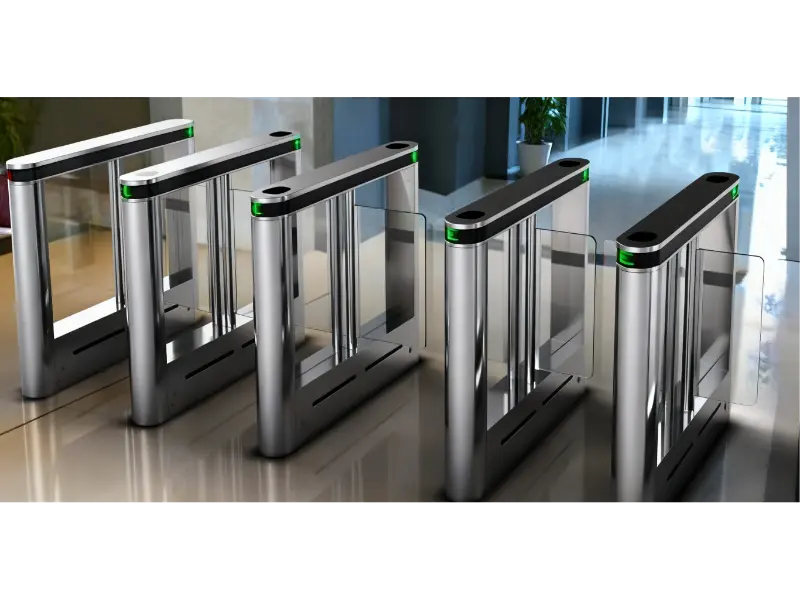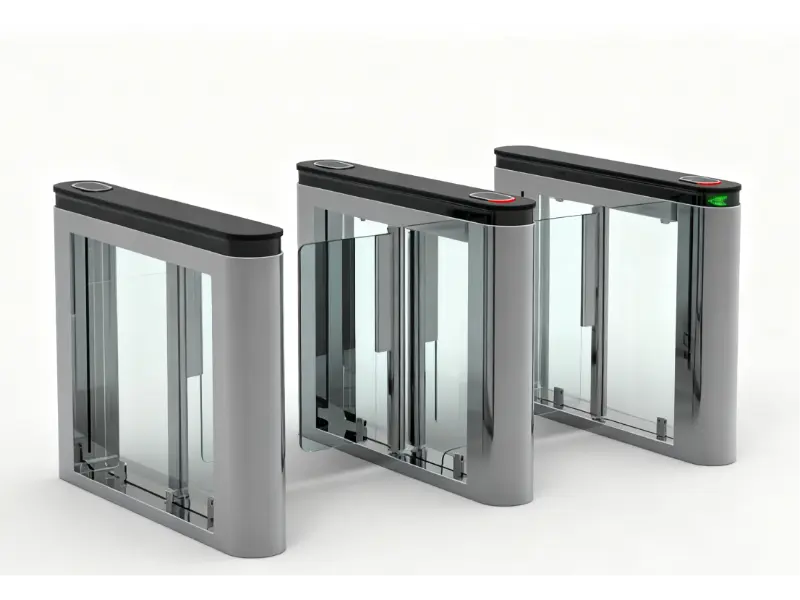Innovative Design for Pedestrian Turnstiles
2025-11-27
Following preliminary analysis and research, ZOJE has optimized the design of its pedestrian turnstile gate to improve both its visibility and ease of use. The result is an ultra-thin turnstile that integrates facial recognition and projection technology with intuitive signage and design. The turnstile primarily uses sheet metal components, complemented by plastic parts, due to the low cost, excellent durability, and high environmental adaptability of sheet metal. Furthermore, this turnstile incorporates the following two innovative design elements.

1.Enhanced Recognition Capability
In designing its pedestrian turnstile gate, ZOJE has done away with conventional card and QR code reading systems, replacing them with camera-based facial recognition technology. This relatively new technology is widely used in consumer payments. It identifies individuals based on their biometric characteristics, using visible light to capture facial images, resulting in greater reliability. As pedestrians move through, the camera actively captures their facial information, quickly assessing their access rights. The advantages of facial recognition include convenience and speed; verification is only required upon detecting a person's presence, eliminating the need for physical cards or mobile phones, and it is less affected by network and signal strength. Facial recognition is also a highly secure and difficult-to-falsify identification method, making it ideal for pedestrian turnstile gates. This effectively reduces congestion and expedites passage.
As for the specific design, the camera is located in the upper left corner of the right pedestrian turnstile gates, and the height of the door was raised to 1.5 m to accommodate people with a height between 1.2 and 2.1 m, making it easier for the camera to capture the user's facial image.

2.Improved Usability
To address the issue of users easily accessing the wrong pedestrian turnstile gate, several solutions exist, such as incorporating indicator lights and integrating directional guidance systems or interactive projections into the product design. ZOJE prioritizes direct visual guidance, making it more intuitive. Therefore, the design of the pedestrian turnstile gate was improved by adding curves to its original square shape. This directional curve enhances the turnstile's accuracy, guiding users naturally and effortlessly to the correct passage, reducing the time they spend thinking about where to enter. This effectively improves the product's error tolerance thanks to its design.
In addition to visual guidance, the pedestrian turnstile gate panel features green lights indicating the location of the facial recognition camera, and the door also projects the direction of passage. By using lighting and projection, the confusion previously caused by excessive illumination is mitigated, further improving the usability of pedestrian turnstile gate.
Furthermore, since pedestrian turnstile gates do not require cards or QR code scanning modules, ZOJE has also reduced their width without compromising their basic structure. This reflects the minimalist aesthetic of modern turnstile design and contributes to the product's lightweight feel. The narrow pedestrian turnstile has a total width of only 173 mm, one-third less than traditional turnstiles. Therefore, more turnstiles can be installed in the same space, increasing the number of pedestrian crossings and their overall capacity.

As can be seen from the explanation above, the design of this pedestrian turnstile gate focuses on improving recognizability and ease of use, making passage through the gate smoother and reducing the likelihood of congestion, thus effectively improving the overall efficiency of passage, safety, and user experience of the gate.




